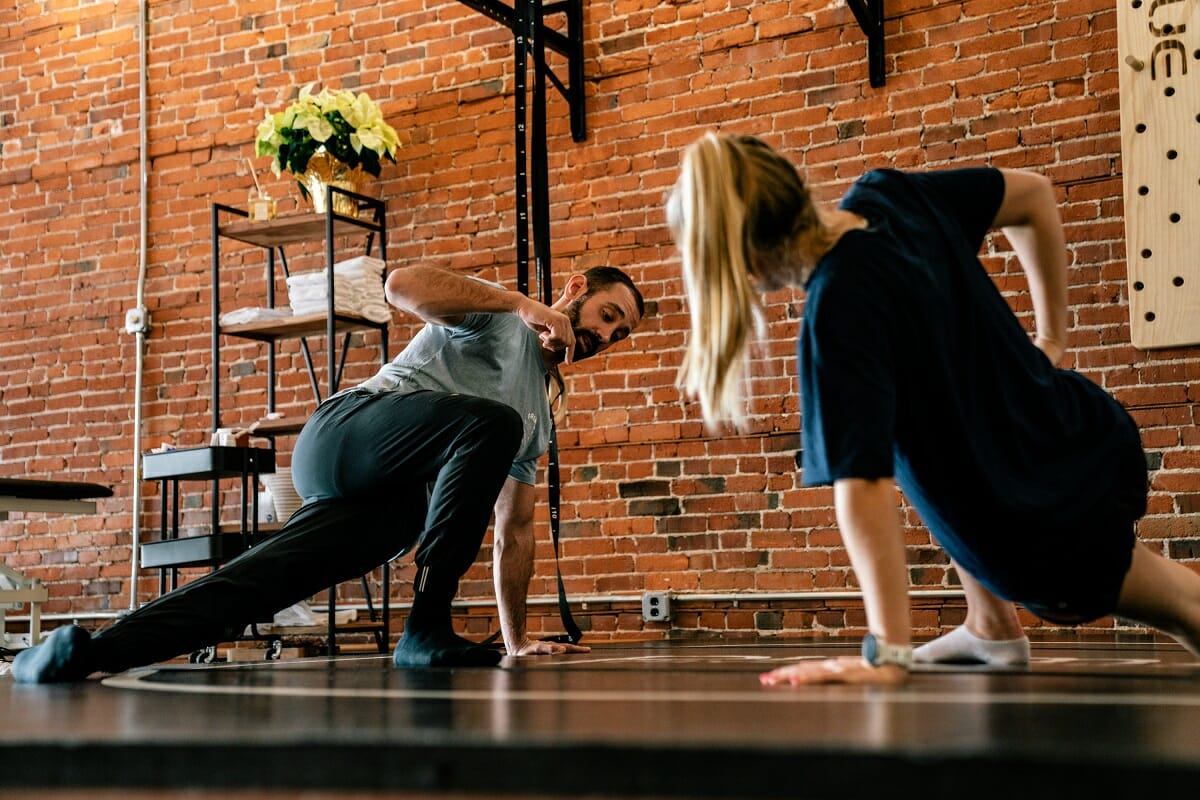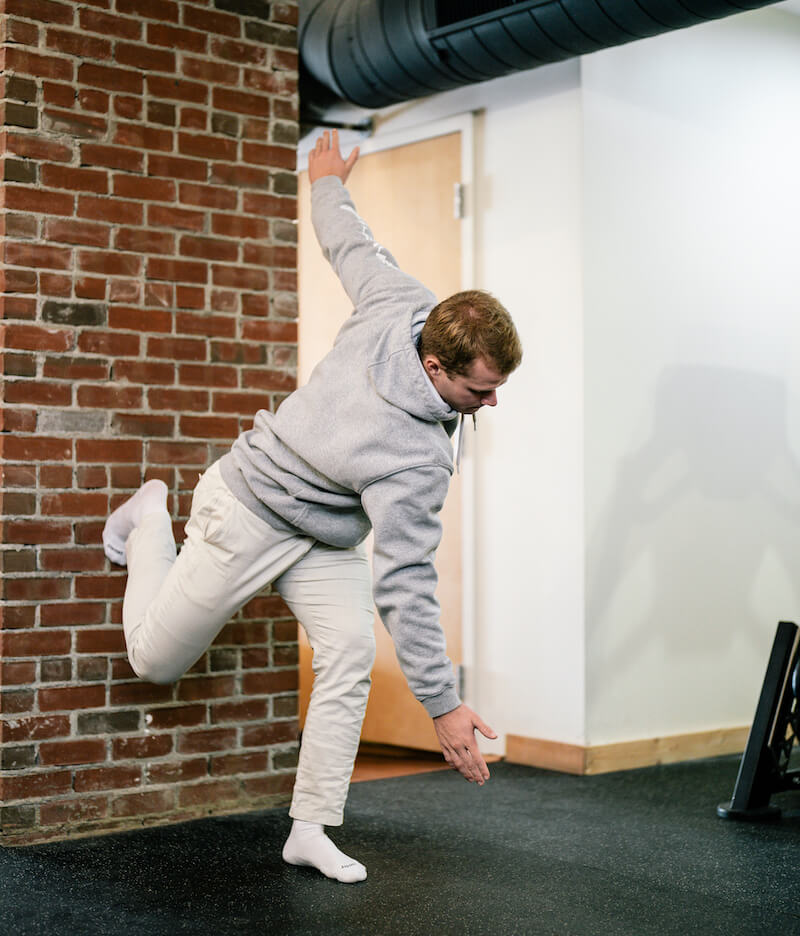Running is an excellent form of exercise that provides numerous health benefits, but it can lead to injury if your body isn’t moving efficiently. One way to predict your running efficiency is with a gait analysis, and address your running mechanics. Running mechanics refer to how a person runs. This includes foot strike pattern, stride length, posture, cadence, and more.
Gait analysis with a trained clinician will evaluate these mechanics and identify any abnormalities or inefficiencies that may be causing pain or affecting performance.
This article will discuss the importance of running mechanics and explain how an expert gait analysis will help you prevent injury and improve your running performance.
Why Running Mechanics Matters

Proper running mechanics are crucial for optimizing running performance and reducing the risk of injury. Running with incorrect mechanics can lead to overuse injuries such as stress fractures, shin splints, plantar fasciitis, hip pain, and runner’s knee.
Additionally, improper mechanics can impede performance by limiting running efficiency. By focusing on proper running mechanics, runners can improve their efficiency, reduce their risk of injury, and achieve their running goals.
Related Article: How Gait and Running Analysis Can Enhance Athletic Performance
Common Running Form Mistakes

Several common form mistakes can lead to injury and decreased performance.
One of the most common mistakes is overstriding. Overstriding occurs when a runner takes too long a stride and lands with their foot too far in front of their center of mass. This can increase the strain on the Plantar Fascia, shin, Tibialis Anterior and Posterior, Patellar tendon, Femur, and Hip joint. These excessive forces can lead to plantar fasciitis, shin splints, stress reactions, tendinopathies, and other running injuries.
Another common mistake is running with an excessively upright posture. This type of posture leads to decreased glute and posterior chain recruitment and potentially a heel strike pattern. Patellofemoral and knee pain are common injuries arising from running more upright.
You can reduce your risk of injury and improve your running performance by identifying and correcting these common running form mistakes.
Biomechanics of Running and Running Efficiency

An efficient runner can run at a given speed while exerting the least energy. In other words, it measures how well a runner can use their body’s energy and the forces the ground imposes on them to move forward. Several factors can impact running efficiency and running economy. These factors include biomechanical aspects such as foot strike pattern, stride length, cadence, body composition, running form, and fitness level.
By improving running efficiency through proper training, nutrition, and form, runners can increase their ability to run longer distances, maintain faster speeds, and reduce the risk of injury. You will improve your performance by saving energy for longer runs or intense training sessions.
Let’s review some of the key points of each of these biomechanical factors:
Foot Strike
An essential aspect of running biomechanics is foot strike, which refers to the point of contact between the foot and the ground. Foot strike patterns are categorized as heel striking, midfoot striking, and forefoot striking.
A heel strike occurs when the heels make initial foot contact with the ground, while a midfoot strike occurs when the foot lands relatively flat to the running surface. In a forefoot strike, the ball of the foot makes initial contact.
Research has shown that the ideal foot strike pattern may vary depending on the individual’s running mechanics and training goals. However, running with a forefoot or midfoot strike pattern will reduce peak impact forces and allow the spring mechanism of the Achilles to do its job. Some studies show midfoot and forefoot striking lead to increased running efficiency, potentially reducing the risk of injury and improving performance.
Stride Length
A stride is composed of a stance phase and a swing phase. Ideal stride length can vary based on individual factors such as height, leg length, and running speed. However, running with a stride length that is too long or too short for your body type can lead to inefficient running mechanics and increase the risk of injury.
An overstride, for example, causes the foot to land too far in front of the body (Center of mass), increasing peak impact ground reaction forces and potentially causing damage. Optimal stride length contributes to the foot landing more under the center of mass, and contributes to forward momentum. This running characteristic reduces injuries and improves running efficiency.
Cadence
Runner’s cadence, or stride rate, refers to the number of steps taken per minute. Running with a relatively higher rhythm has been shown to reduce the risk of injury, as it can help decrease the impact forces on the body and reduce the likelihood of overstriding.
A higher cadence also promotes greater efficiency and improved performance. It has been shown to:
- Result in less up-and-down movement with a continuous forward motion (increasing efficiency).
- Decrease time spent on the ground with each strike (decreasing peak ground reaction forces and increasing the time spent “in the air”
- decrease peak ground reaction forces and slow the ground reaction force loading rate, which is often a primary driver of tissue breakdown.
There isn’t an optimal cadence value because everyone is built differently. However, we do know that a rhythm of around 160-180 steps per minute is often considered an ideal goal for many runners.
Injury Prevention for Runners

Injury prevention is a crucial aspect of running for novice and experienced runners alike. Runners can continue enjoying the many physical and mental benefits for years by prioritizing injury prevention strategies and taking care of their bodies.
Shin splints, IT band syndrome, plantar fasciitis, and stress fractures are commonly seen in runners, yet these injuries can easily be avoided with proper training, nutrition, and running form (biomechanics).
Training volume is another important consideration when promoting longevity in your training regimen and avoiding injury. Training volume considerations include:
- Gradually increasing intensity and volume
- Incorporating strength and flexibility training
Other considerations for injury prevention include:
- Wearing appropriate footwear
- Seek medical attention if pain and/or discomfort persists or worsens.
And don’t forget, addressing biomechanical issues such as heel striking, overstriding, and other improper characteristics through running mechanics analysis can be critical to reduce the risk of injury.
Related Article: Rehab Strategies for Athletes Recovering from ACL Tears
Gait Analysis and Running Form

Running gait analysis is a comprehensive analysis of a runner’s running form and identifies biomechanical issues that may increase injury risk and decrease efficiency. The initial assessment evaluates the runner’s foundational movements (mobility, flexibility, and strength). This evaluation is coupled with a gait analysis for runners, often through detailed video analysis, to determine the efficiency of your specific gait components, such as foot strike pattern, stride length, cadence, trunk position, and tibial inclination angle.
The results of a gait analysis in Bryn Mawr, PA, can help runners understand how to adjust their form and training regimen to optimize their running mechanics, reduce the risk of injury, and improve overall performance.
Tips for Improving Your Running Form
Individualized gait analysis and evaluation will always be superior to general guidelines. However, there are some trends we commonly see among runners that can be addressed with the following tips to enhance your running form:
Strength Training
Strength training for runners has been shown to improve their running form and reduce their risk of injury. By targeting key muscle groups such as the glutes, hips, and core, strength training can help improve overall stability and control during the running motion.
In particular, exercises focusing on strengthening the muscles responsible for maintaining proper posture and alignment can help prevent common issues such as contralateral pelvic drop, overpronation, or excessively upright posture. Ultimately, strength training improves running efficiency by allowing for more effective force production and reducing fatigue during long runs.
Strength training can and will improve runners’ mechanics, reduce their injury risk, and improve their overall performance when incorporated into their training program.
Mobility Exercises
Mobility exercises can be effective for runners trying to improve their form and reduce injury risks. By prioritizing mobility as a part of their overall training regimen, runners can improve their running mechanics, reduce their risk of injury, and enjoy the many physical and mental health benefits of running.
Exercises that improve range of motion and joint movements can benefit runners by addressing tight or restricted areas of their bodies, such as hips, hamstrings, and ankles. In many cases, strength training will unlock those mobility deficits identified through the movement assessment, so results are compounded when a runner includes mobility and strength exercises in their training regimen.
Form Drills
Form drills can be valuable to runners who want to improve their form, increase their performance, and enjoy the many benefits of running for mental and physical health.
Running form drills are valuable tools for runners who want to improve their running technique and efficiency. They help runners develop proper strategy and muscle memory by targeting specific aspects of running form. Valuable drills that have been shown to help improve form and reduce injury include drills that encourage knee drive, improve foot strike, alter cadence, and refine trunk lean and arm swing.
A regular form drill training routine can help runners improve their running mechanics and reduce injury risk. By practicing proper form through exercises, runners can develop a greater sense of body awareness and control, allowing for a smoother and more efficient running movement.
Form drills can include A-skips, B-skips, pogos, and wall-lean marches, which target different muscle groups and aspects of running form.
Video Analysis
A certified running specialist will often use video analysis to help runners improve their form and identify areas for improvement. By recording a runner’s movements during a run and analyzing the footage, the team can identify inefficiencies in running gait that can lead to injury, loss of power, and energy.
In addition, it allows runners to make targeted adjustments to their form, such as improving posture, cadence, knee drive, or adjusting their foot strike. In addition, you and your Gait Specialist can use the video analysis to track progress over time, allowing you to accurately identify areas that need improvement and see how your form has improved.
Coaching
After the foundational mobility and strength assessment and running gait and video analysis have been completed, coaching can be a beneficial tool for runners looking to optimize their performance and improve their running form. Based on the findings of the full gait analysis, a coach can develop a customized training plan to help the runner achieve their goals. It may include training schedule modifications, exercises, drills, or strength training programs designed to improve running mechanics or target areas of weakness.
Further, Physical Therapists can provide feedback and guidance on proper form and running technique, helping runners develop good muscle memory and avoid common mistakes that can lead to injury. Following a gait analysis with our physical therapists, we have found that runners show improved consistency in their training, likely due to their improved motivation as they feel the improvements in their running efficiency and ease, and they show greater success with sticking to their training plan and achieving their goals.
Every Stride Counts: Step Into Stronger, Safer Running
Understanding running mechanics and gait analysis is essential for runners who want to improve their form, reduce their risk of injury, and optimize their performance. Take the first step towards improving your running performance and reducing the risk of injury by booking a professional gait analysis with our expert team of physical therapists.
At Primal Physical Therapy, we pride ourselves on our approach to treating runners. Our process includes all of the components described above, from evaluation and video analysis to developing a comprehensive training plan and coaching plan based on your particular needs.
Get started optimizing your running form today by scheduling your consultation with one of our certified gait analysis specialists.